The U.S. Department of Homeland Security recently estimated that President Trump’s much-discussed border wall between the U.S. and Mexico could cost as much as $21.6 billion.
As the federal government issues requests for proposals to build the wall, several economists from the University of California San Diego are publishing important findings on what’s really happening with immigration across the U.S.-Mexico border, and asking whether spending on a wall is the best way to solve any existing immigration crisis.
Their paper, published recently in the Spring 2017 edition of the Brookings Papers on Economic Activity, finds that weak labor-supply growth in Mexico and other Latin American countries means immigration to the U.S. of young, low-skilled workers will continue to slow until it reaches zero in 2050—even without the implementation of Trump’s border policies.
A more pressing issue for U.S. policymakers, they argue, is how to address an aging population of long-term, undocumented residents already in the U.S., many of whom will lack health insurance and, as non-citizens, could end up in emergency rooms without Medicare or Medicaid.
You can find a brief summary of their findings below. To learn more, read the full paper.
From the early 1980s to the mid-2000s, the U.S. experienced a huge wave of low-skilled immigration from Latin America.
Between 1970 and 1990, the fraction of young (age 18-33), foreign-born persons from Mexico in the U.S. with a high school degree or less rose from 11.6 percent to 34.0 percent. The fraction from elsewhere in Latin America and the Caribbean rose from 13.2 percent to 23.7 percent.
Since the Great Recession, however, overall low-skilled immigration to the U.S. has slowed drastically…
The total undocumented population declined by an annual average of 160,000 individuals between 2007 and 2014. By 2015, the share of foreign-born, low-skilled workers ages 18 to 33 in the U.S. had dropped to 27.2 percent, and 75 percent of low-skilled immigrants had resided in the U.S. for 11 years or more.
Mexico is by far the largest source country for U.S. labor inflows, accounting for nearly half of all U.S. low-skilled immigrants and nearly two thirds of those with less than 12 years of schooling.
The authors note that some of the slowdown can be attributed to the collapse in the U.S. housing market, as construction is the second largest sector of employment for undocumented labor and the third largest sector when considering employment among all low-skilled immigrants.
…and immigration of young Mexican workers to the U.S. will be practically zero by 2050, even without new policies to deter immigration.
This chart pretty much says it all:
Predicted migration rates from Mexico and Latin America through 2050
Foreign born population aged 15-40
 Source: “Along the watchtower: The rise and fall of U.S. low-skilled immigration” by Gordon Hanson, Chen Liu, and Craig McIntosh, Brookings Papers on Economic Activity, Spring 2017.
Source: “Along the watchtower: The rise and fall of U.S. low-skilled immigration” by Gordon Hanson, Chen Liu, and Craig McIntosh, Brookings Papers on Economic Activity, Spring 2017.
Hours worked by immigrants in U.S. border states are also on the decline.
In U.S. border states, the share of total hours worked by immigrants with 12 or fewer years of schooling rose from 11.9 percent in 1994 to 16.2 percent in 2005, but dropped to 14.1 percent by 2015.
Those who are migrating from Mexico aren’t necessarily coming because they can make more money for their skills.
By comparing the actual distribution of wages in Mexico for Mexican residents to a counterfactual wage distribution for Mexican immigrants to the U.S., the authors find that in 1990, Mexican immigrants saw higher returns for their skills in the U.S. than they did in Mexico.
By 2010, however, working-age Mexican immigrants who reside in the U.S. weren’t overwhelming low-income workers seeking higher wages. Rather, they were almost a random sampling of working-age Mexicans, and were largely individuals who would be middle-income earners in their birth country.
“There are good reasons to believe,” the authors write, “that the Great Recession may have merely advanced forward in time an inevitable reduction in low-skilled immigration.”
An improving Mexican economy means Mexican workers have a smaller incentive to migrate to the U.S.
In Mexico and elsewhere in Latin America, the 1980s and early 1990s were periods of high economic volatility. During this time, the U.S. saw a surge of low-skilled immigration.
The 2000s, however, were a period of steady if not spectacular economic growth in the region, where shrinking gaps in income between the U.S. and Latin America slowed migration.
During the 1990s and early 2000s, the gap between the 25th percentile of the income distribution in the U.S. and the 50th percentile of the income distribution in Mexico—which roughly matches expected gains in earnings for the typical Mexican migrant—was stable.
But it shrunk noticeably after 2007. In the 1990s and early 2000s, a middle-income earner in Mexico who chose to become a low-income earner in the U.S. would see her earnings increase by a factor of 2.3. Post-2007, that value has fallen to 1.75, suggesting reduced wage-driven pressure to migrate.
Increased border security and immigration enforcement efforts are responsible for some of the slowdown.
Between 2000 and 2010, the number of U.S. Border Patrol agents policing the U.S.-Mexico border doubled, from 8,600 officers to 17,500 officers, and has since remained at historically high levels.
The U.S. government has also intensified immigration enforcement in the interior of the country, which has led to an increase in deportations of non-criminal undocumented immigrants from 116,000 individuals in 2001 to an average of 226,000 individuals per year over 2007 to 2015.
But new research suggests demographic changes in Mexico and elsewhere in Latin America play an outsize role—and explain why immigration rates aren’t likely to pick back up.
Whereas the U.S. baby boom came to a halt in the early 1960s, Latin America’s baby boom didn’t abate until two decades later, in the late 1970s. This means there were more workers coming into working age in Latin America than there were in the U.S.
These demographic changes mean the labor market supply of workers in Latin American is shrinking, and we can expect to see far fewer young people immigrating to the U.S.
The undocumented workers that are in the US are getting older.
In 1980, Mexican-born individuals in the U.S. were most likely about 22. Today, that number is 40—and will be almost 70 by 2040. Looking ahead, the Latin American-born population over 40 will grow by 82 percent in the next 15 years, while the under 40 population is projected to shrink by 6 percent.
The authors write:
“Given our estimates of an increase of 8.5 million (81 percent) in the population of over-40 foreign-born immigrants by 2030, we should expect sizeable growth in the number and fraction of individuals relying on public safety-net programs as a result of past and future immigration. Under existing financing rules, U.S. states and localities would be the entities primarily responsible for shouldering these costs.
In light of the changing demographics of migrant-sending nations, the current emphasis of the U.S. government on further intensifying immigration enforcement is puzzling. Why build a wall to stop an immigration surge that has largely already occurred?”
To learn more about migration flows from Latin America to the U.S. today and in the years to come, read the full paper from the Brookings Papers on Economic Activity.
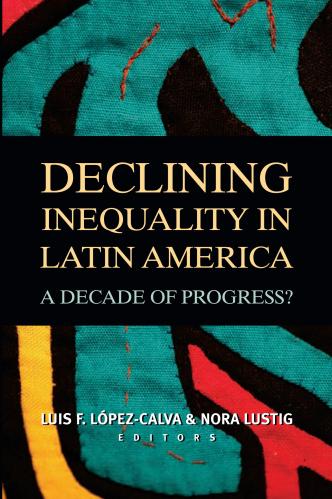
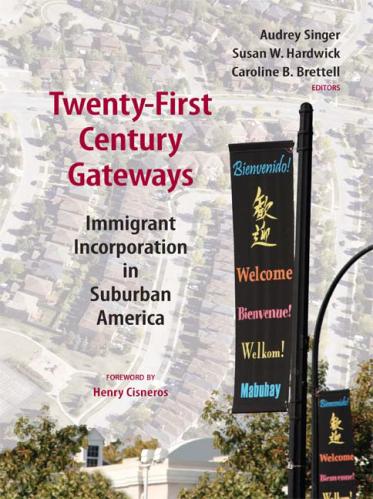
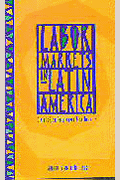
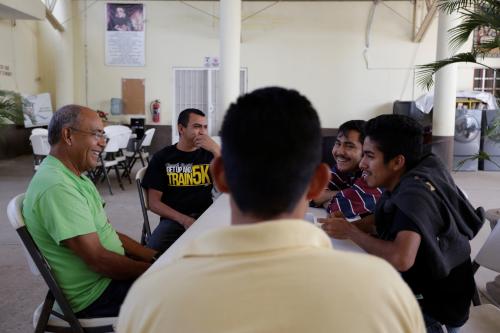
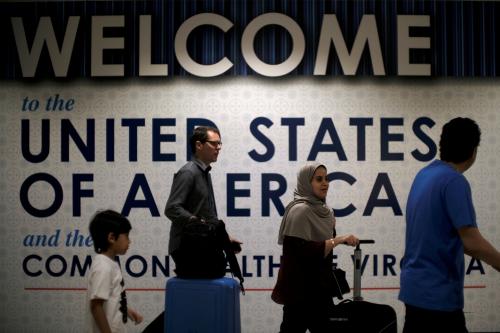
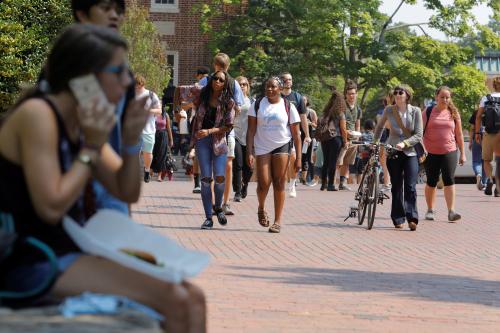
Commentary
Why undocumented immigration from Latin America to the US will slow to a crawl—even without a border wall
March 23, 2017